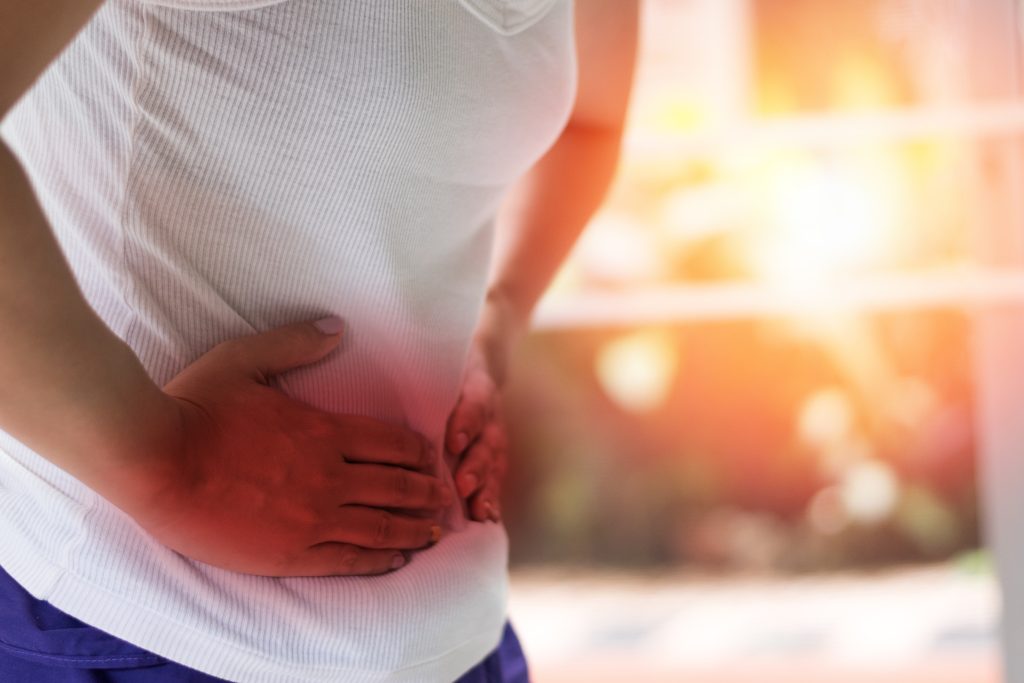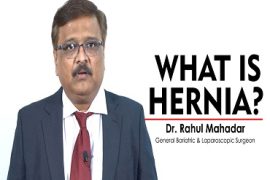Ever felt a sharp pull or discomfort in your stomach or groin area after lifting something heavy or working out too hard? You might wonder—is it just a muscle strain, or could it be something more serious like a hernia? While both conditions can cause similar symptoms, they are quite different and need different treatments. Let’s break it down in the simplest way to help you understand the difference and know when to seek help.
What Is a Hernia? Causes and Common Signs
A hernia happens when an internal organ, like the intestine, pushes through a weak spot in your muscle or tissue. It’s like something inside your body trying to poke out where it shouldn’t. This can happen in your belly, groin, or near the belly button. A hernia usually develops from things that increase pressure in the abdomen.
Causes
Common causes include heavy lifting, straining while passing stools, chronic coughing, or being overweight. Some people are even born with weak abdominal muscles that make a hernia more likely.
Signs
The most common signs include a visible bulge in the affected area—especially when you stand, cough, or lift. This bulge might disappear when you lie down. You may feel a dull ache, pressure, or even a dragging sensation. Sometimes, hernias cause no pain at all in the beginning but become painful over time.
What Is a Muscle Strain? How It Happens and Key Symptoms
A muscle strain happens when the muscle fibres get overstretched or torn. It usually occurs after sudden movements, lifting something too heavy, or overusing a muscle during sports or exercise. Sometimes, even slipping or awkward bending can cause a strain.
The symptoms of a muscle strain are usually quite sudden. You may feel a sharp or burning pain at the time of injury. The area can become swollen, tender to touch, and even bruised. Muscle movement can be painful, and the affected muscle may feel weak or stiff. In most cases, strains improve with rest, ice, and gentle care within a few days to weeks.
Spotting the Differences: Hernia vs. Muscle Strain
Here are some simple ways to tell the difference between a hernia and a muscle strain:
- A hernia often causes a soft bulge in the groin or abdomen that you can see or feel.
- Muscle strains usually do not cause a visible lump.
- Pain from a hernia tends to feel like pressure or a dull ache and may worsen when coughing, lifting, or bending.
- Muscle strain pain is sharper and more sudden and is felt during muscle movement.
- A hernia does not go away with rest, while a muscle strain typically improves with rest, ice, and time.
- A hernia might come and go depending on body position; muscle strain pain stays constant until healed.
When the Pain Gets Worse: What Each Condition Feels Like
Hernia pain usually builds up slowly. You might feel discomfort after eating, standing for long, or lifting something heavy. The ache may become more noticeable over time. If the hernia gets trapped or stuck, the pain can suddenly become severe.
In contrast, a muscle strain usually hurts right after the activity that caused it. The pain is sharper, more localized, and worsens when you try to move that muscle. Rest usually brings relief.
Physical Clues: Swelling, Bulges, and Movement Limitations
A hernia may look like a small bump or swelling that gets bigger when you cough or strain. You might even be able to gently push it back in. On the other hand, a muscle strain causes swelling and sometimes bruising, but there’s no bulge. Moving the affected area can be painful or limited in both cases, but the presence of a bulge is a strong clue for a hernia.
Risk Factors: Who Is More Likely to Get a Hernia or a Strain?
Certain people are more likely to develop a hernia. These include individuals who frequently lift heavy objects, those who are overweight, people with chronic coughing or constipation, smokers, and men—especially for groin hernias. Some people are also born with weak abdominal walls, making them more prone to hernias.
Muscle strains are more likely in people who are very active, such as athletes, or those who suddenly increase their physical activity. Not warming up before exercise, poor posture, or repeating the same motion can also lead to strains. Older adults with less flexible muscles are at a higher risk too.
Diagnosis: How Doctors Identify the Right Condition
Doctors usually start with a physical exam and questions about your symptoms. For a hernia, they may ask you to cough or strain while standing to see if a bulge appears. They might also suggest an ultrasound or CT scan to confirm it.
For a muscle strain, the doctor will check your range of motion, muscle strength, and where it hurts. Imaging tests like MRI or ultrasound might be used if the strain seems severe or doesn’t improve.
Treatment Approaches for Each Condition
Hernias often need surgery to repair the weak spot in the muscle wall and push the organ back into place. Some small hernias can be managed for a while without surgery if they don’t cause much discomfort, but they don’t go away on their own.
Muscle strains usually heal with rest and simple care. The R.I.C.E method—rest, ice, compression, and elevation—is the go-to home treatment. Over-the-counter pain relievers and gentle stretching or physiotherapy may help in recovery. Most people recover fully within a few weeks.
When to Seek Medical Attention and Why Early Detection Matters
If you notice a bulge in your belly or groin that doesn’t go away or feels painful, it’s time to see a doctor. A hernia can become serious if it gets trapped and cuts off blood flow. This is an emergency and needs quick treatment.
For muscle strains, if your pain doesn’t improve in a few days, or if it worsens, get it checked. You might have a deeper injury that needs special care.
Conclusion
Knowing whether you’re dealing with a hernia or a muscle strain can save you time, pain, and stress. Watch for signs like a bulge, sharp pain, or muscle weakness. Remember, hernias usually stick around and may need surgery, while muscle strains often heal with rest. If in doubt, always check with a doctor. Early attention can prevent bigger problems later.




Comments are closed.